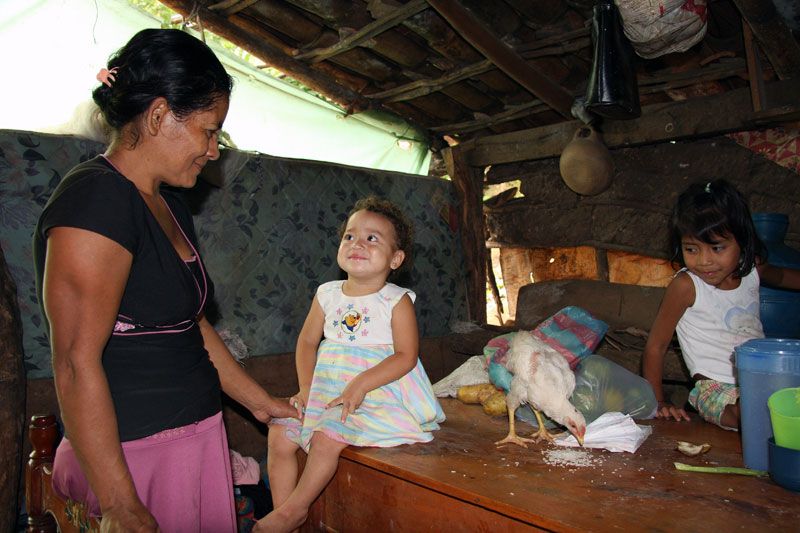Maria Digna Ramos Mendoza wishes for a pretty house and a large basin to store fresh water for her five children. But, when she wakes up, "there is nothing."
Mendoza lives in a one-room, mud hut with her children. Her husband left four years ago to work in the United States, where he met another woman. She said whenever they call him asking for money, he says that he is more sick and needs money sent to him instead of to them.
During the rainy season she uses their only mattress as a make-shift wall, along with three other ratty tarps. The family of six sleeps on two twin bed frames, without electricity nor running water.
Many days she struggles to feed her hungry family. She collects firewood to make enough money to buy beans and rice. Each two-hour-long trip nets 30 lempira, roughly $1.60. But some days she cannot go because she has to take care of the children.
"There have been a few days when we only had hot sauce to eat, or a few tortillas to go with it," she said.
Mendoza's family is one of the poorest families that Shoulder to Shoulder helps in Santa Lucia. The two-year-old girl was diagnosed with moderate malnutrition and was enrolled in the year-long nutrition study. As a project participant, Mendoza receives food vouchers for the family in addition to the nutritional supplement for the infant.
"Now I am happy because the nutrition project has been helping to feed my children," she said.
Furthermore, only a year ago the family had no means to relieve themselves. As a result, the dirt ground was covered in human and animal feces. Shoulder to Shoulder recently funded an outdoor latrine for the family, helping to improve the family's sanitation and hygiene.
The non-profit's medical clinic also provides medical assistance to her chronically sick children, and for her four-year-old son with anemia.
Chief Operating Officer Art Ranz said that this wide-ranging support is what makes Shoulder to Shoulder unique in it's approach to improving the lives of Hondurans over the long term.
"I think the most important thing about Shoulder to Shoulder is that we have come to one area and concentrated on that particular area of the country and tried to address as many of the needs as we can," he said. "We've tried to address their medical care, their dental care, their education, their nutritional status, their water, and we've developed programs for motivation for the girls."
